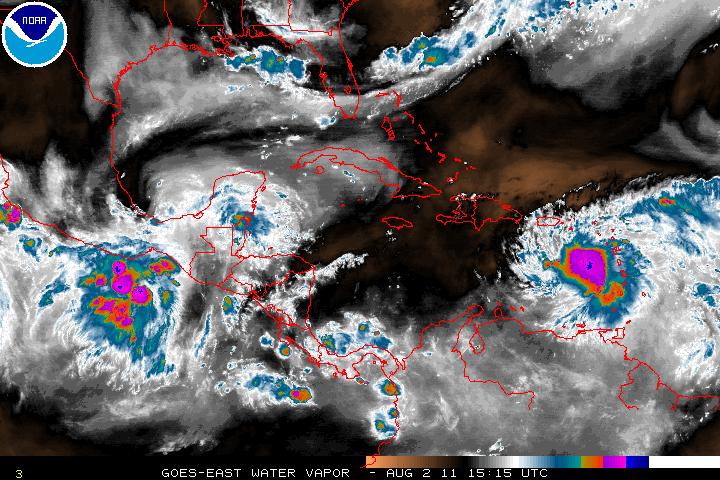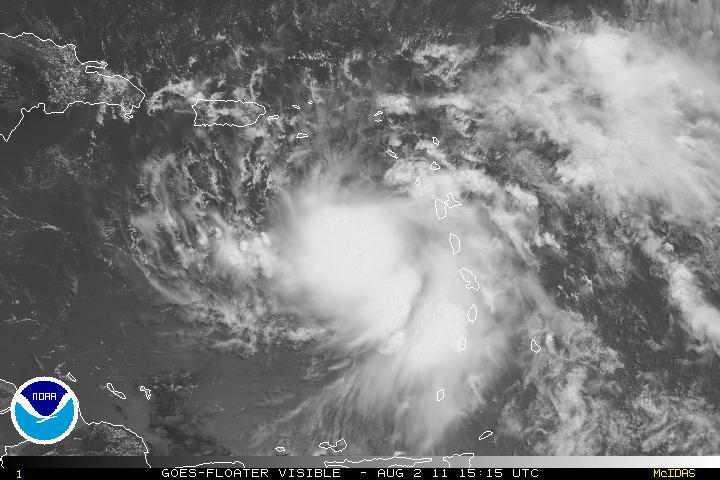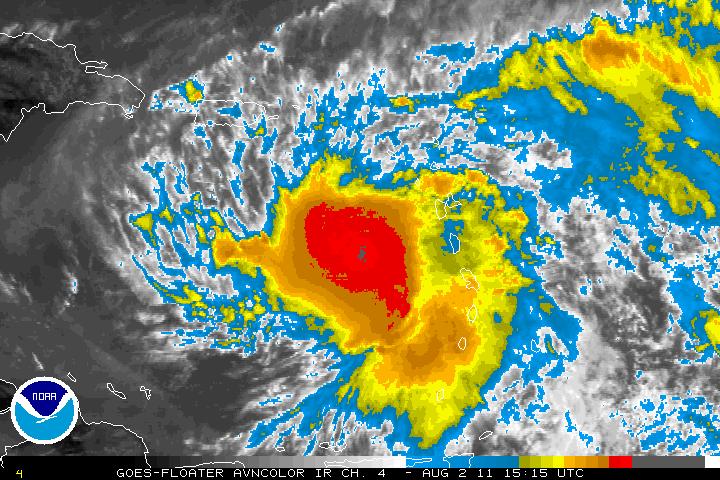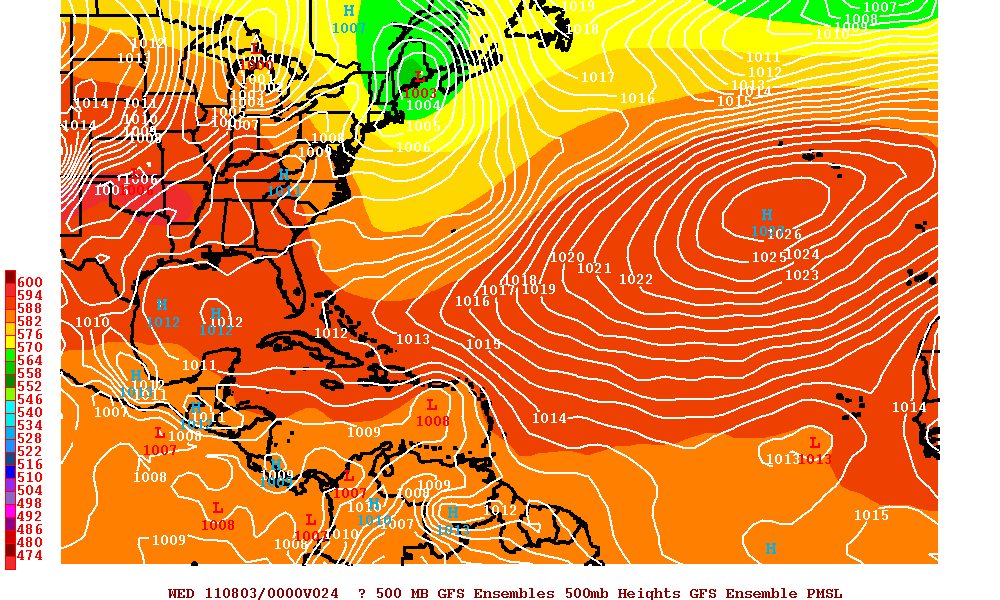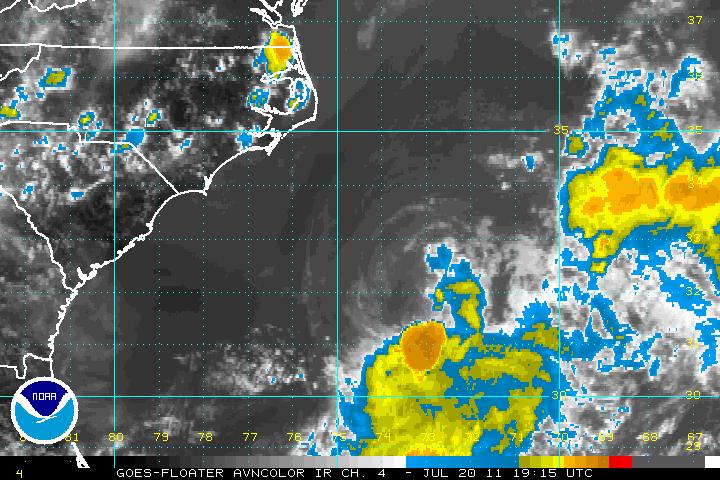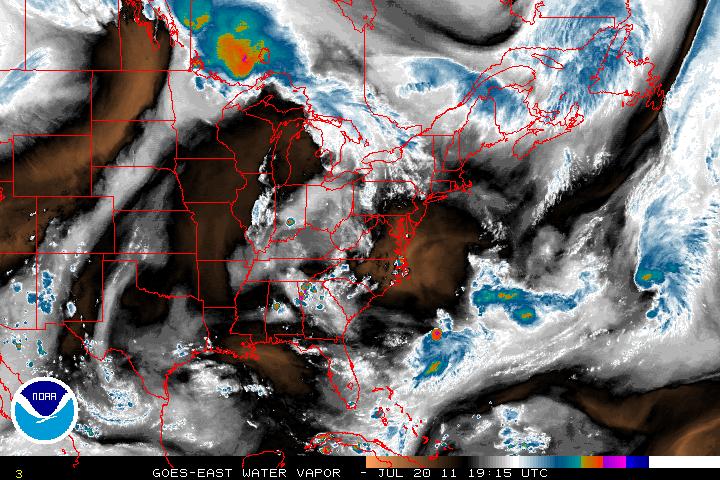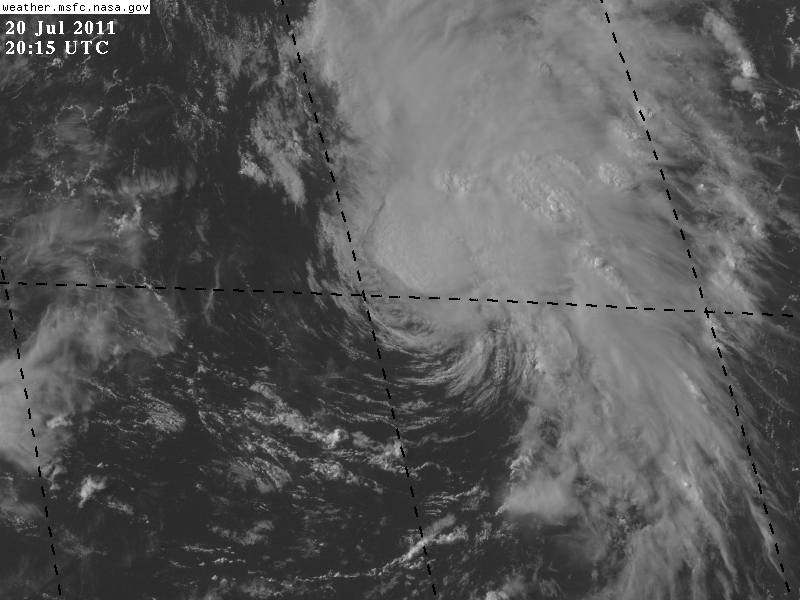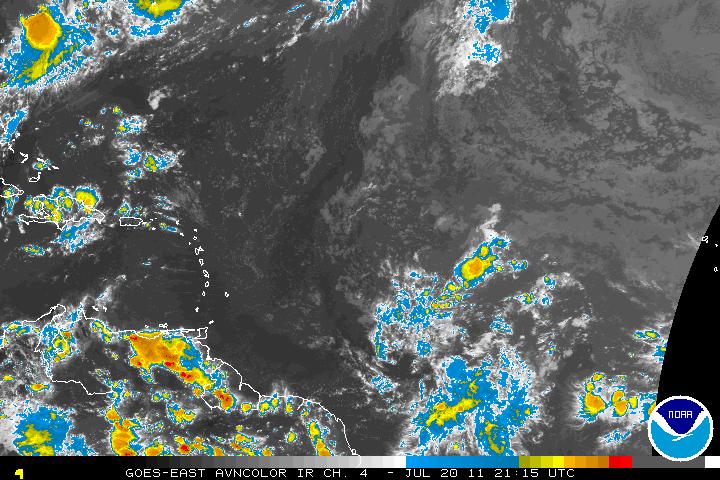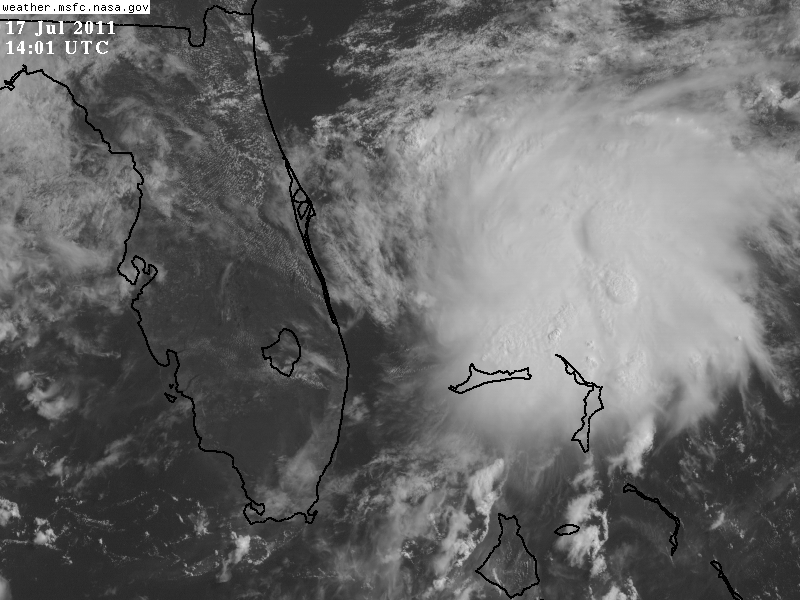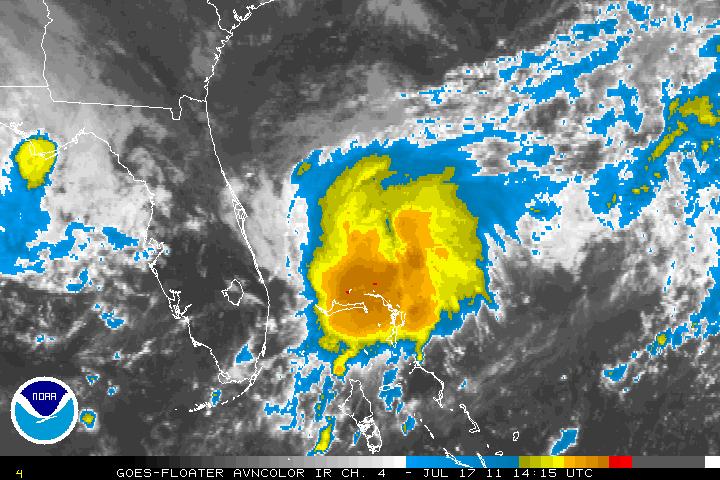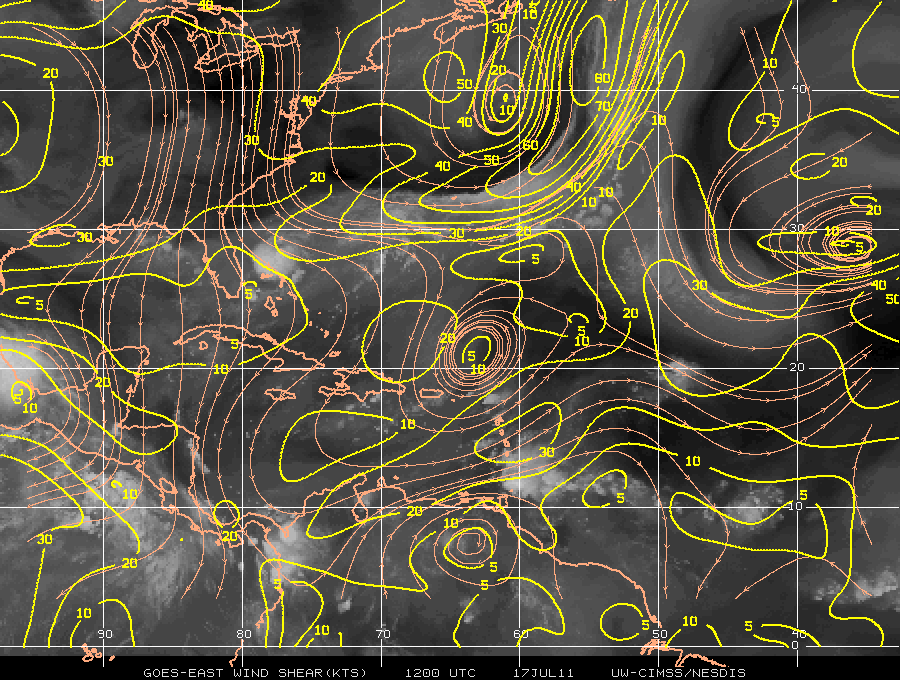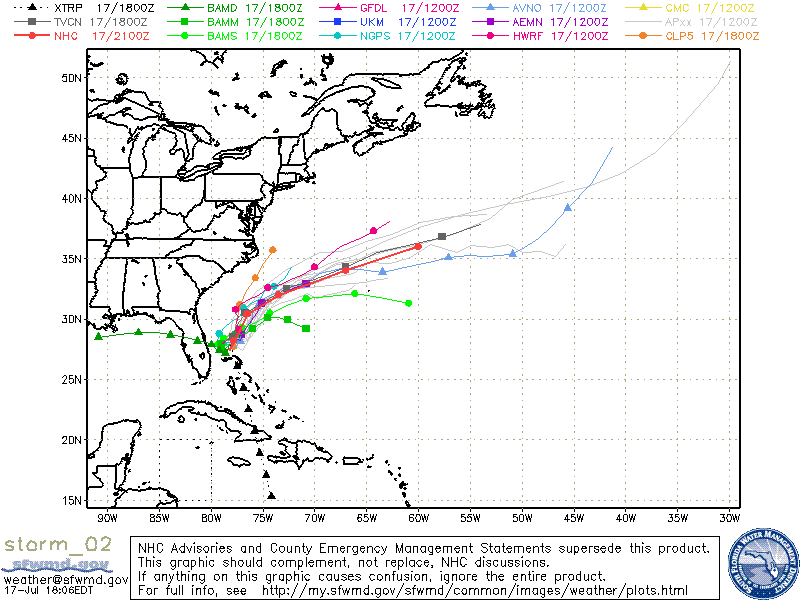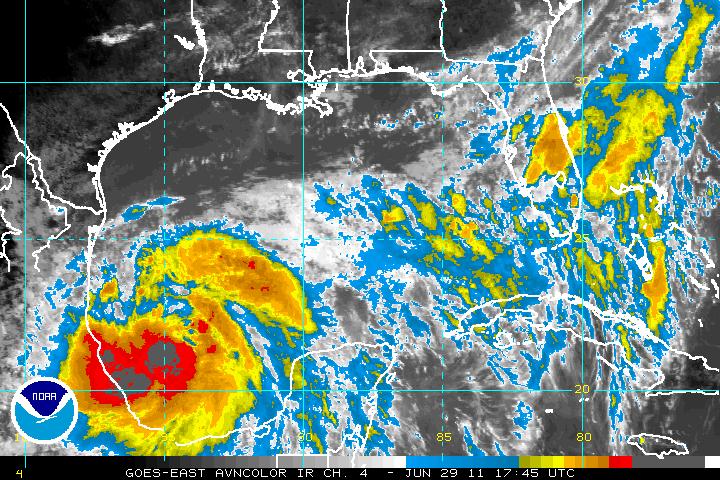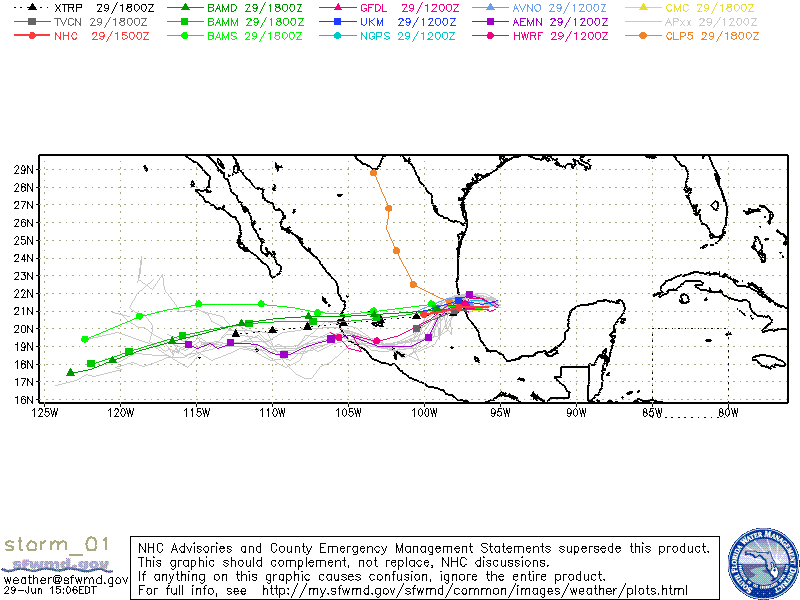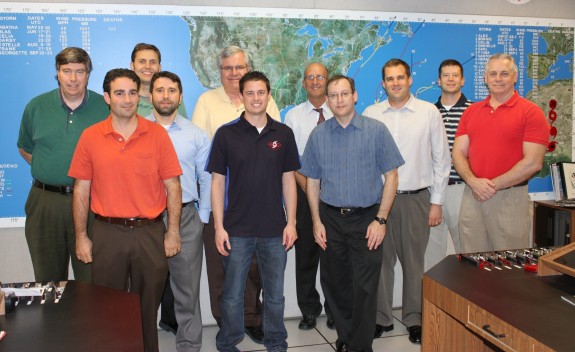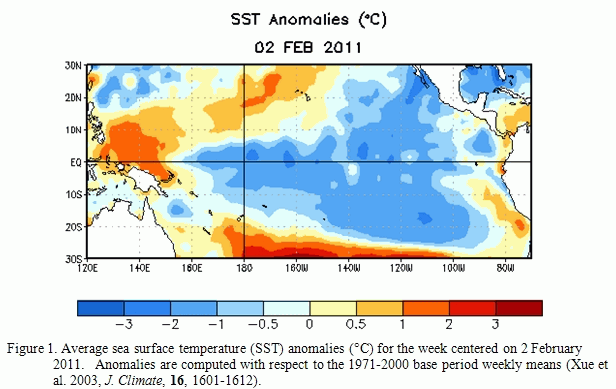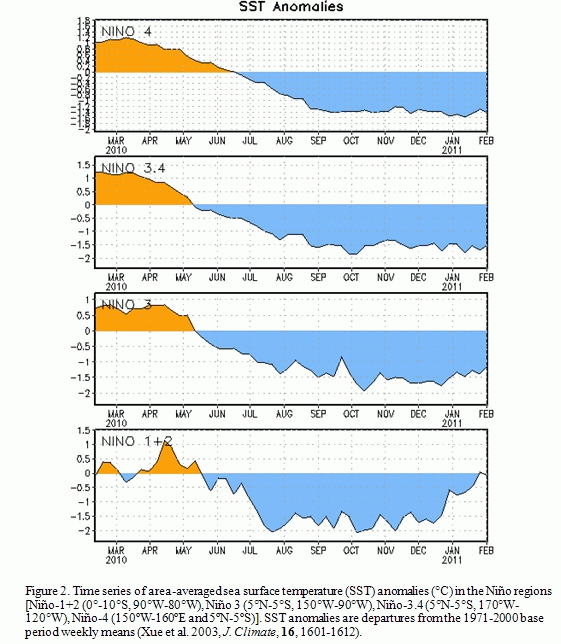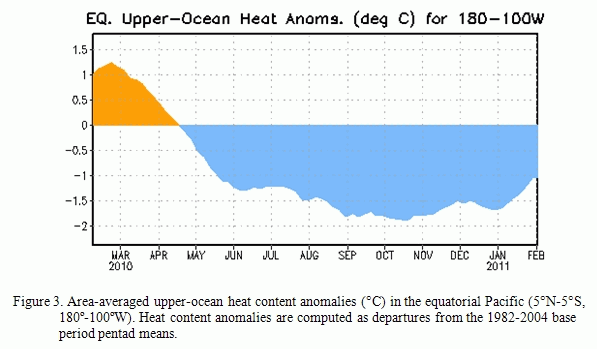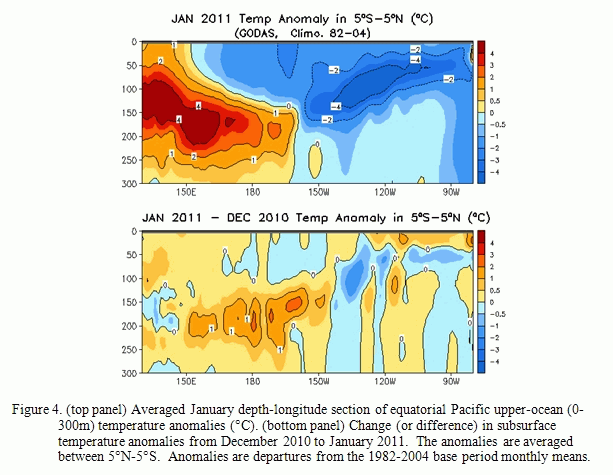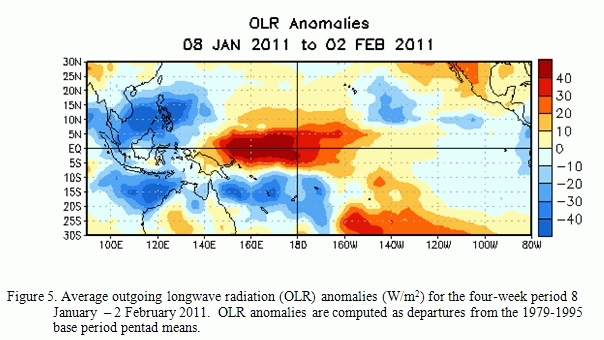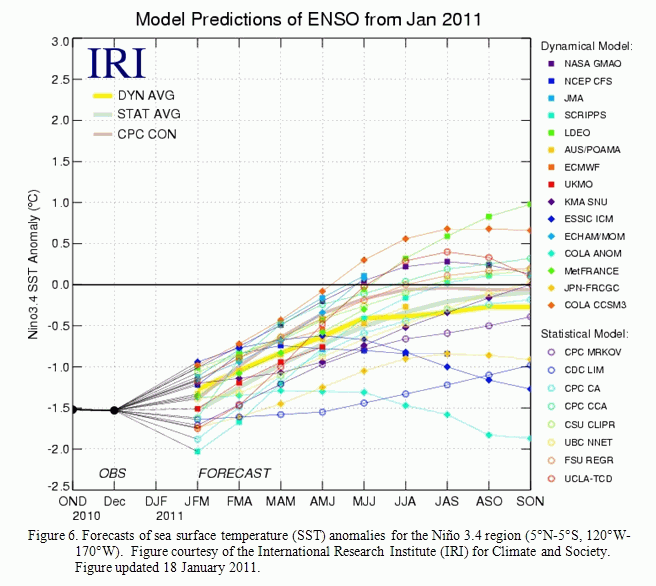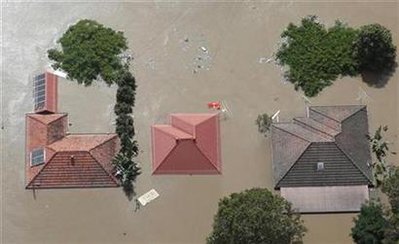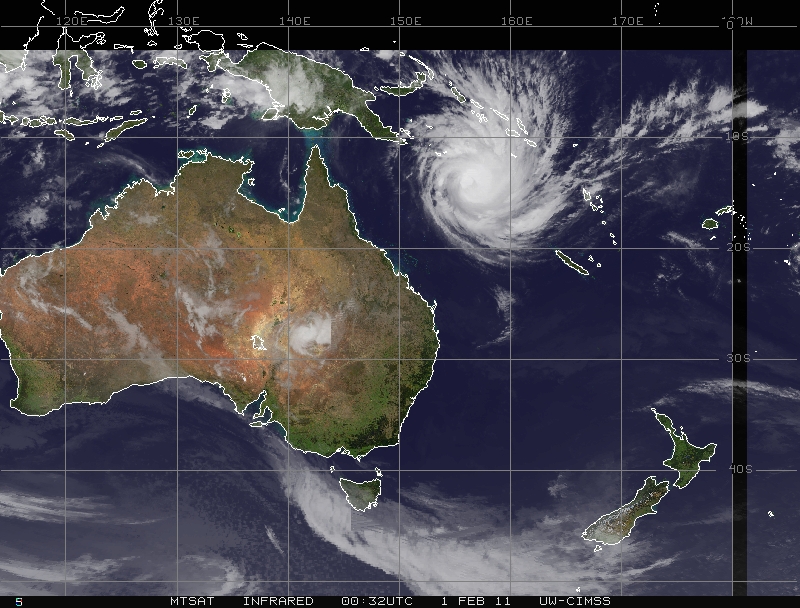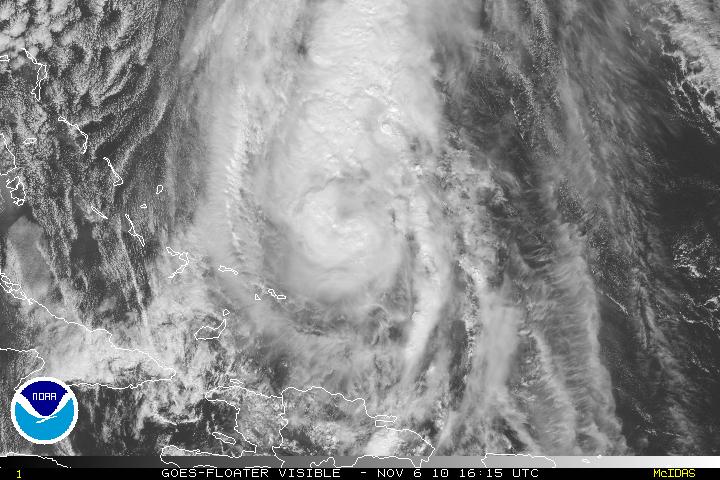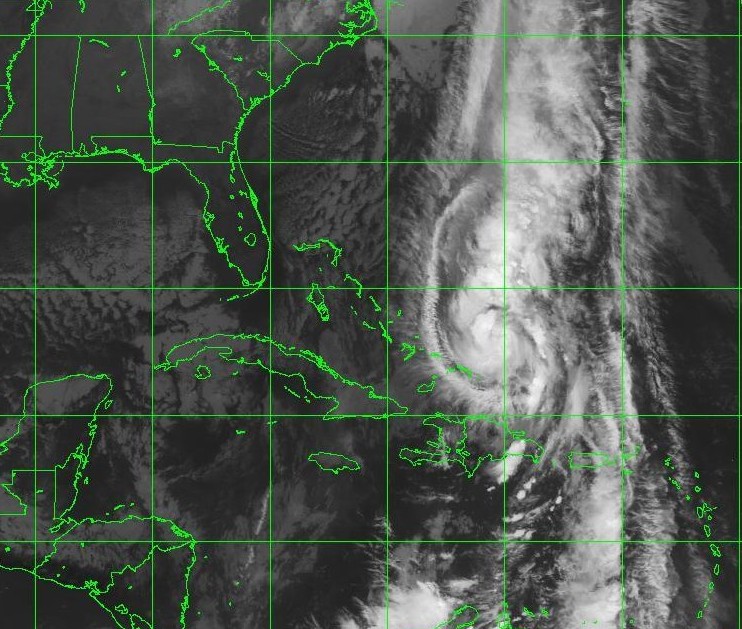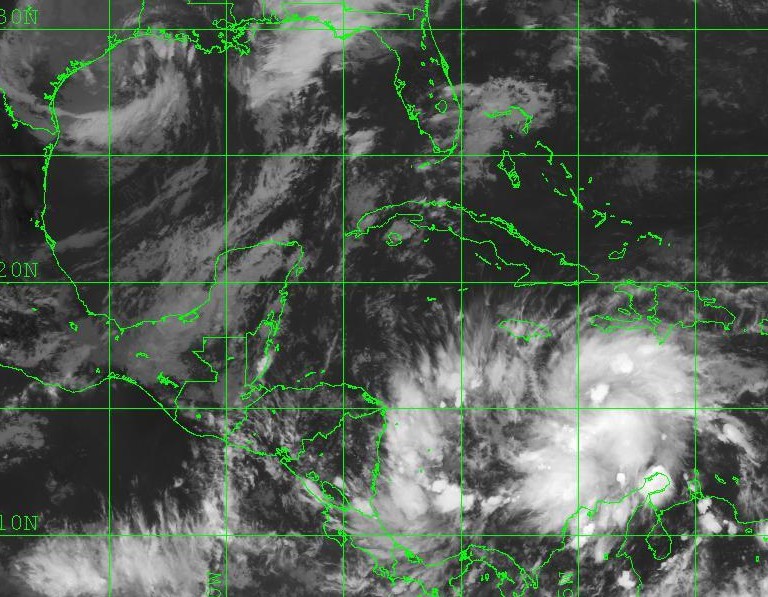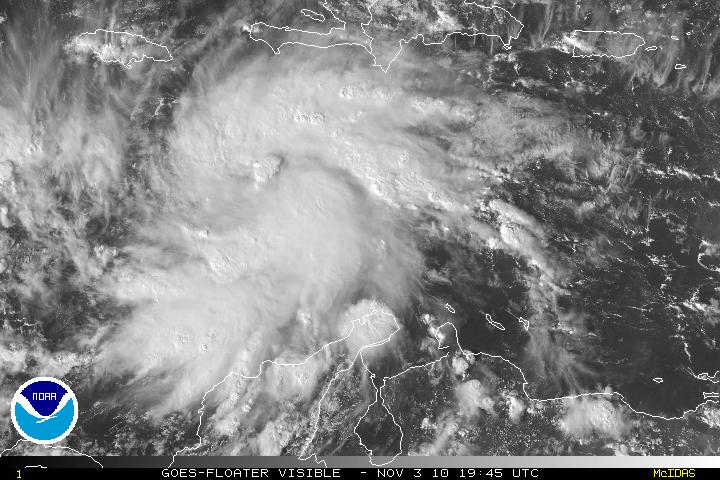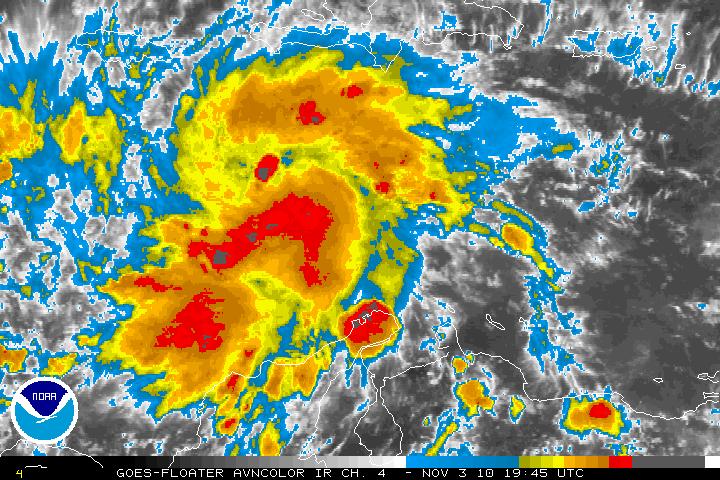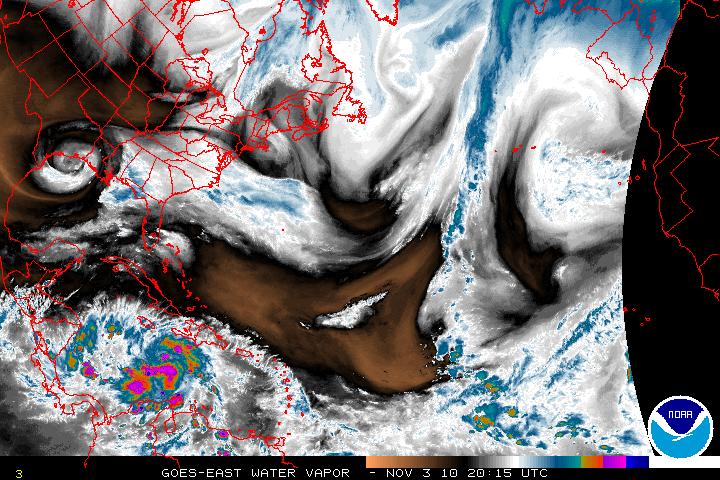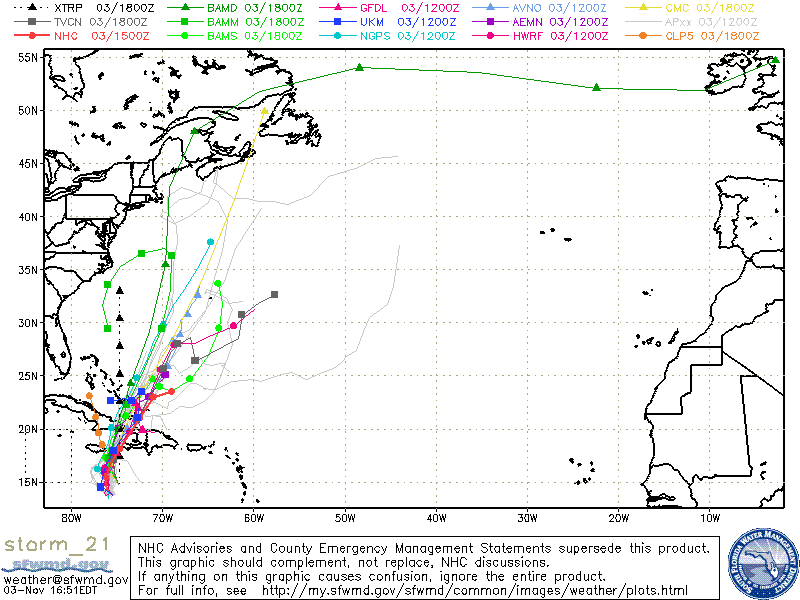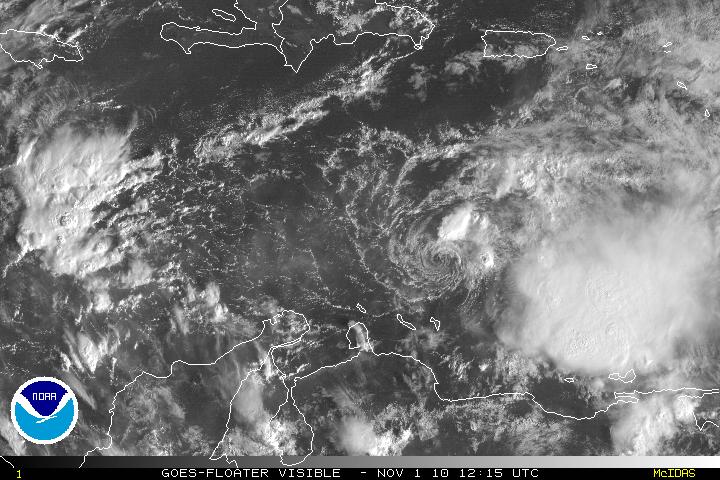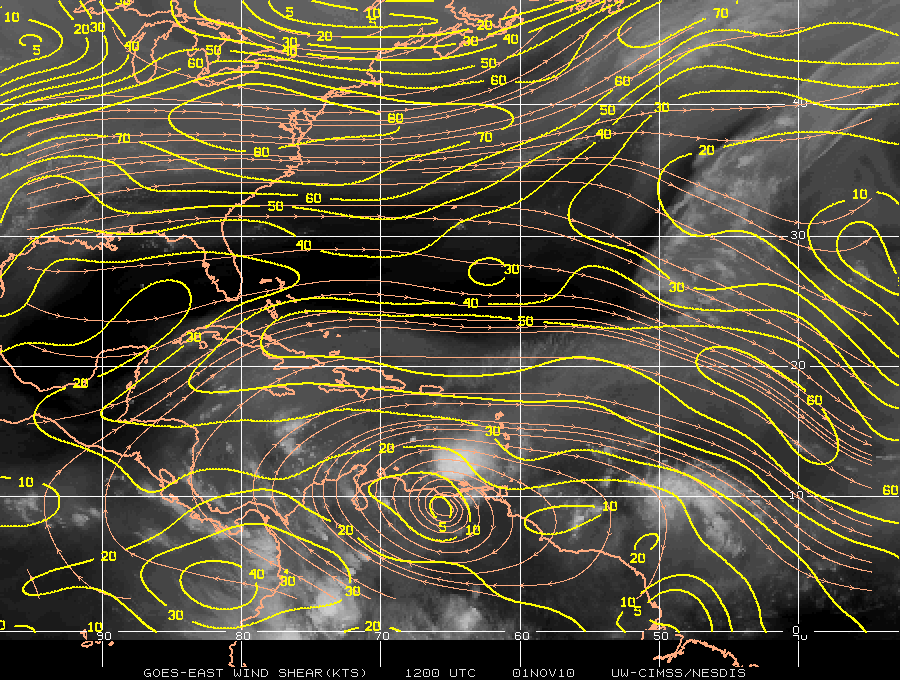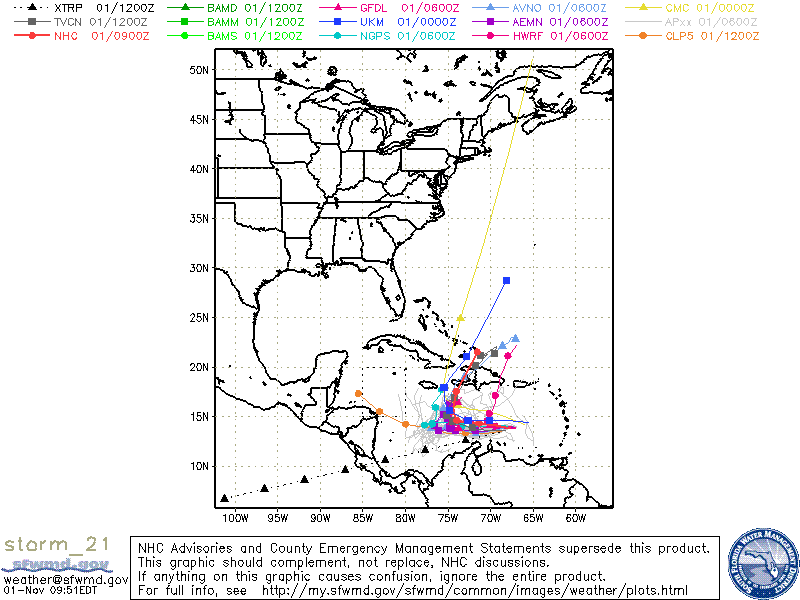The large tropical wave that was near the Antilles Islands has been upgraded to Tropical Storm Emily as of 7:30 PM last night by the NHC. Emily at this time is a storm with 40 MPH but should slightly increase for the next 24-48 hours. One of the reasons Emily is struggling somewhat is because there is a lot of dry air to the north of Emily and the flow from that dry air is wrapping around the storm thus making difficult for intensification. There is also a upper trough that is to the NE of Emily and that outflow is shearing the north side of the storm and again limiting the amount of intensification. This upper trough will be leaving within the next day or so and this may allow some further intensification, but this will be gradual.
A very strong trough will be diving south in the western Atlantic and soon should allow Emily to take a northwestern turn and then a turn to the north. The forecast is for Emily to possibly be a moderate strength storm with possible wind speeds of 50 – 60 MPH while heading northwest and having landfall somewhere in Hispaniola. (The trough depicted in the image below is the green to yellow to light orange pattern.)
If Emily makes landfall in the western edge of Hispaniola, Emily may or may not survive the crossing to the Atlantic due to some mountains as high as 10,000 feet. Assuming Tropical Storm Emily does cross to the Atlantic, weakened but still tropical in nature, Emily may regenerate and some strengthening may be foreseeable.
The track for Emily is very uncertain and Florida/Bahamas may be the next target. The trough will be lifting out, roughly during hours 72-96 and Emily may head a little more west-northwest heading somewhere in the vicinity of Florida or the Bahamas. Eventually a shortwave will cause a sharp turn northeastward and take Emily out to sea. If Emily stalls for a long period of time, then the track for Emily will be changed and Florida may have to deal with her. Everyone in the possible affected areas should keep an eye on this storm.
